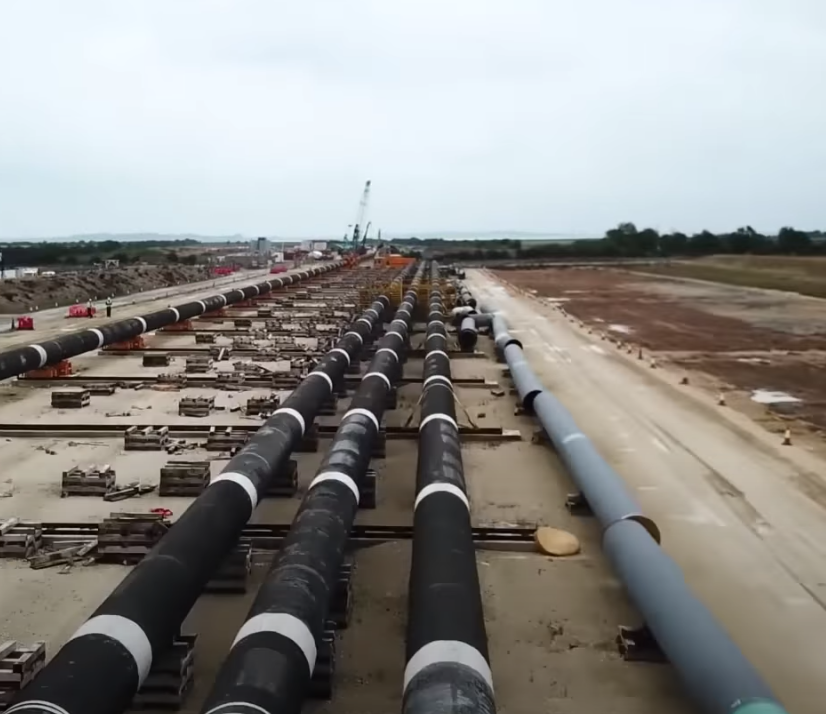Various media sources state that some European leaders have looked at the option of weaning their countries off gas, which has been supplied by Russia, and in its place opt for green hydrogen or other suppliers of gas. But is this a realistic alternative given the huge logistic issues associated with this change?
Since the invasion began on February 24, the EU has paid Russia more than €20bn (£17bn) for gas imports alone. The European Commission has now produced a strategy to lower its reliance on Russian gas by the end of 2022 — but how realistic is it? The European Commission wants to cut this amount by 66% by the end of this year by increasing the supply from other sources and lowering the demand for gas from various sectors.

Considering Hydrogen – In the UK, the government hopes to create entire hydrogen-powered neighbourhoods in a bid to help lower the carbon footprint of domestic heating and become a net-zero carbon nation by 2050, some 28 years away. Using fossil fuels such as gas for heating and cooking does contribute to emissions. By contrast, burning hydrogen is emission-free, and so would represent a huge leap forwards in focusing on this 205 net-zero goal.
However, in light of the current climate, how quickly could Russian gas be replaced with gas or hydrogen? While the UK is wanting to move hydrogen-powered neighbourhoods, this will be rolled out over years. It’s a huge task and not something which can be done in the short term.
So is this realistic?
Let’s look at hydrogen for a moment – For starters swapping fossil gas used for heating homes and other applications with green hydrogen would need an enormous amount of available renewable energy. Europe consumed 512 billion cubic metres of natural gas in 2020. Just under 190 billion cubic metres (around 37%) of this came from Russia. Europe would need five ocean oil tanker sized deliveries every day to make up for this shortfall. Let’s look at Spain and its solar farms to make up for this loss as an alternative. They would need land about the size of the Netherlands for additional solar panel space. And replacing all the fossil gas in Europe with solar-powered hydrogen would require an area a third of the size of Germany. Not really ideal.

What about other gas? What about replacing Russian gas with LNG (liquified natural gas) – but from different areas? Maybe hydrogen is a step too far currently. So what about other suppliers of LNG, at least as a start? Norway is a key supplier of piped gas, and Qatar and the US provide the bloc with liquefied natural gas (LNG), which is transported by ship.
NB: BCM = Billion cubic meters of natural gas
The single largest saving in the EU’s plan comes from increasing imports of LNG, which the EU hopes could replace 50 bcm of Russian imports. Another 10 bcm could be replaced by boosting gas pipeline imports from other trading partners, such as Norway and Algeria. Increased biomethane production from sources such as food waste and manure could replace 3.5 bcm. In the domestic sector, reliance on Russian gas may be reduced by up to 14 bcm if all homes dropped their thermostat by just 1C. Increasing the roll-out of rooftop solar panels could reduce demand by another 2.5 bcm . . .
In the past, LNG plant and shipping was very expensive. However, over time these costs have fallen considerably. A recent study showed that some of the cheaper LNG facilities are already being built in America, taking advantage of the proximity to existing infrastructure as well as access to cheap Henry Hub gas (Henry Hub is a natural gas pipeline located in Erath, Louisiana). This specific gas has not yet suffered from the huge price rises seen in Europe and elsewhere.
Issues for consideration:
EU countries that rely on Russia for more than half their gas either have no LNG terminals or limited availability.
The UK has several large LNG terminals with spare capacity. Via pipeline connections, it may be possible for the UK to re-export gas to the EU.
Spain has the most LNG terminals and accounts for the EU’s import capacity.
Spain and Italy both have pipeline connections with Algeria. If Spain is able to import more LNG, then Algeria could then redistribute more gas to Italy. From Italy, it could then be piped to the rest of Europe.